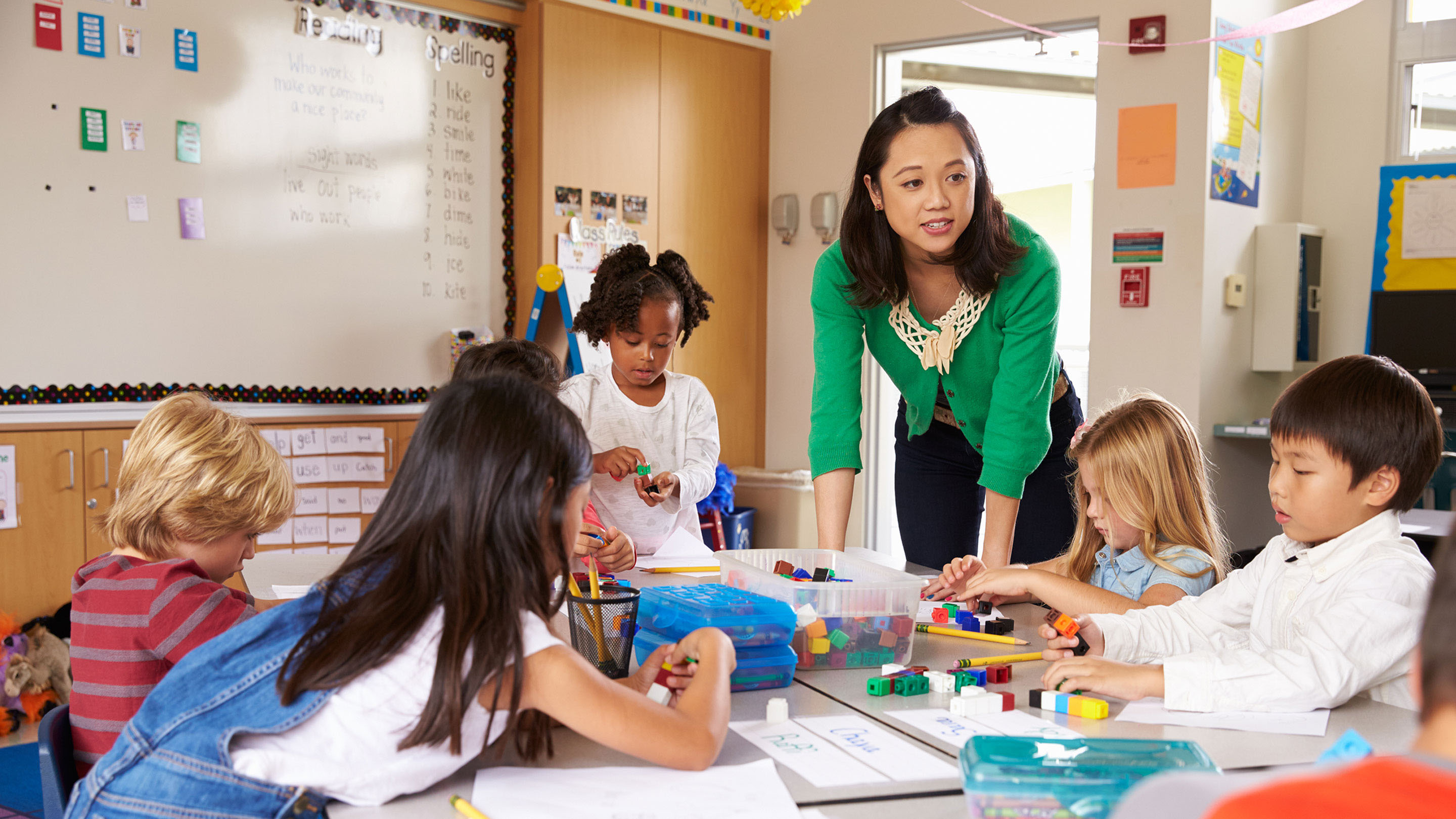Enroll in Primary Science Tuition Singapore for a Strong Science Foundation
Enroll in Primary Science Tuition Singapore for a Strong Science Foundation
Blog Article
A Comprehensive Guide to the Numerous Learning Techniques in Key Science Direction
The expedition of varied understanding approaches in key scientific research instruction presents a chance for instructors to boost student interaction and understanding substantially. By taking a look at hands-on understanding techniques, inquiry-based methods, and collective techniques, we can determine efficient methods that cater to different finding out designs.

Hands-On Knowing Techniques
Hands-on learning methods play a pivotal function in key science direction, engaging trainees in active expedition and testing. These approaches enable learners to connect directly with phenomena and products, cultivating a deeper understanding of scientific principles. By using manipulatives, designs, and real-life experiments, educators create an atmosphere where pupils can observe, hypothesize, and examine their ideas.
Such strategies not just boost comprehension yet likewise cultivate essential reasoning and analytic abilities. When trainees take part in tasks like constructing basic makers, planting seeds, or carrying out chain reactions, they are encouraged to ask questions and look for solutions via their own observations. This experiential approach helps to demystify intricate clinical principles, making them more accessible and relatable.
In addition, hands-on understanding advertises partnership among peers, as students often function in teams to carry out experiments or share findings. This synergy not just enhances their learning experience but additionally establishes important social skills. Inevitably, incorporating hands-on methods in main science direction fosters a long-lasting love of understanding and interest about the natural globe, laying a solid foundation for future academic searches in scientific research and beyond.
Inquiry-Based Understanding
Inquiry-based understanding is an educational technique that motivates trainees to ask concerns, explore phenomena, and construct their very own understanding of clinical concepts. This approach changes the emphasis from typical teacher-led direction to a more student-centered experience, where students take the campaign in their instructional journey. By cultivating curiosity, inquiry-based discovering advertises much deeper engagement with the material, permitting pupils to explore subjects in a purposeful context.
In method, this approach usually entails hands-on experiments, observations, and essential thinking tasks that line up closely with the scientific method. Trainees are encouraged to create theories, design investigations, and evaluate data, which cultivates essential abilities such as logical and problem-solving thinking. The role of the instructor in this framework is to assist in exploration, assisting students through the questions process while motivating independent idea and collaboration.
Additionally, inquiry-based learning supports a sense of ownership over the learning process, encouraging students to go after expertise proactively. This method not only improves understanding of clinical ideas however also fosters a lifelong love for learning, outfitting pupils with the skills needed to browse a progressively intricate world.
Collaborative Knowing Approaches
Joint understanding approaches equip trainees to participate in meaningful interactions with peers, promoting a common responsibility for their academic results. In key scientific research instruction, these techniques motivate students to interact to explore scientific principles, resolve problems, and carry out experiments (primary science tuition Singapore). By getting involved in group activities, students can leverage diverse perspectives, enabling richer understanding and retention of scientific expertise
One trick aspect of collective learning is news the emphasis on interaction skills. Students have to articulate their ideas, listen actively to others, and bargain ideas, every one of which are vital competencies in both real-world and scholastic contexts. This social interaction not only boosts their understanding of scientific concepts yet also advertises synergy and conflict resolution abilities.
Moreover, collective understanding frequently brings about enhanced inspiration and involvement. When students see the worth of their contributions within a group, they are more probable to take possession of their understanding journey. Educators can promote this process by creating structured team jobs that line up with educational program objectives while offering support on effective cooperation techniques. Generally, integrating joint understanding techniques in key scientific research guideline cultivates a vibrant knowing setting that prepares trainees for future scholastic and social challenges.
Innovation Assimilation in Science
The combination of innovation in key scientific research instruction enhances learning experiences by giving innovative devices and sources that sustain different mentor approaches, consisting of joint understanding - primary science tuition Singapore. Using digital platforms, simulations, and interactive applications allows pupils to involve deeply with clinical ideas, facilitating a more hands-on method to knowing
Online labs, as an example, allow learners to conduct experiments safely and successfully, advertising inquiry-based understanding. These devices can replicate real-world clinical scenarios, permitting trainees to picture intricate processes that would be difficult to reproduce in a typical class setup. Innovation fosters interaction and collaboration amongst trainees, as they can share searchings for and work together on tasks via on-line platforms.
Furthermore, multimedia discussions and instructional videos can enhance lessons by dealing with varied learning styles, making abstract ideas extra easily accessible. Information analysis tools likewise encourage pupils to collect and translate scientific information, enhancing vital assuming abilities. Overall, the tactical consolidation of modern technology in key scientific research direction not just enhances engagement but likewise prepares trainees look at these guys for a technically innovative culture, furnishing them with important skills for future scientific endeavors.
Distinguished Direction Methods
Separated direction methods are necessary for addressing the diverse needs of learners in key science education. These methods enable instructors to customize their teaching techniques to fit varying capabilities, rate of interests, and discovering styles within the classroom. By using set apart guideline, instructors can produce an inclusive environment that cultivates interaction and improves understanding of scientific principles.
One reliable method is to use adaptable organizing, which enables students to team up with peers at similar ability degrees or with differing perspectives. This strategy motivates peer knowing and advertises important thinking. Additionally, using options in assignments can encourage trainees, allowing them to select tasks that resonate with their interests while still fulfilling curricular goals.
Furthermore, including tiered tasks is one more valuable strategy. Deliberately tasks with differing levels of intricacy, educators can reference make certain that all trainees are suitably tested, no matter their effectiveness. Using formative evaluations to gauge recognizing additional enables instructors to adjust their educational methods dynamically, ensuring that each learner obtains the support they need.
Inevitably, executing set apart direction approaches in primary scientific research education not just enhances trainee learning results but likewise cultivates an enthusiasm for scientific research, preparing trainees for future scholastic pursuits.

Final Thought
In summary, effective main science guideline demands a diverse strategy that incorporates hands-on learning, inquiry-based methods, and collective methods. The integration of innovation and set apart guideline better caters to varied discovering styles, promoting a setting conducive to expedition and vital reasoning.
The exploration of varied knowing methods in primary science direction provides a possibility for instructors to enhance student interaction and comprehension substantially.Hands-on understanding techniques play a pivotal role in main science direction, engaging trainees in energetic expedition and trial and error.Inquiry-based understanding is an educational approach that encourages students to ask questions, investigate phenomena, and construct their very own understanding of clinical principles.Joint understanding strategies encourage pupils to involve in purposeful interactions with peers, promoting a shared obligation for their educational outcomes. Overall, incorporating collaborative understanding approaches in key scientific research guideline cultivates a dynamic knowing environment that prepares students for future scholastic and social obstacles.
Report this page